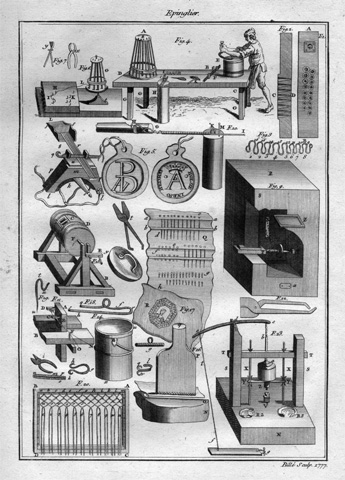Mentofacturing
The organization of work, under the influence of Adam Smith, who popularized the fundamentals of our modern economies, has taken a completely different twist during the nineteenth century through the first half of the twentieth. Reporting on various readings he made on a pin-making shop, he advised that in order to minimize physical movement, and to avoid the loss of time induced by the manipulation of different tools, workmen should be assigned to a few tools or even a single one. He called this new work organization the division of labor, after an expression of Henri-Louis Duhamel du Monceau from whom he borrowed the pin-making case. The division of labor for him, was synonymous to specialization and translated into what we call today the "assembly line", made famous by Frederick Taylor and Henry Ford, with consequences on management techniques, like the ones promoted by Alfred Sloan. |
|
Today, new costs have arisen, and new productivity rules have emerged. None of them played any role in Adam Smith's pin-making factory case. Variations of intellectual productivity between individuals sometimes exceed by several orders of magnitude what we have seen in manufacturing. Also, as we are now increasingly confronted with intellectual work, we need to resolve new issues around intellectual collaboration. One of them corresponds to a mechanism which has remained largely unaffected by the Information Age, and where the speed of information transmission is still utterly slow: interpersonal communication. Although the interpersonal dependency problem was identified early by Frederick Brooks, we think that his belief that no technique or trick would exponentially improve software productivity is wrong. Some links with the organizational proposals we make can be found with Michael Hammer's business process reengineering principles. The two first chapters of Mentofacturing can be downloaded here: mentofacturing.pdf. The file is large, be patient. You'll need Adobe Reader to open it, or any pdf compatible reader utility. This document can be freely redistributed as a whole, but is subject to copyright 2006-2013 by Vincent Lextrait. The author, vincent@lextrait.com, will welcome remarks or corrections, even typographical. |
|

